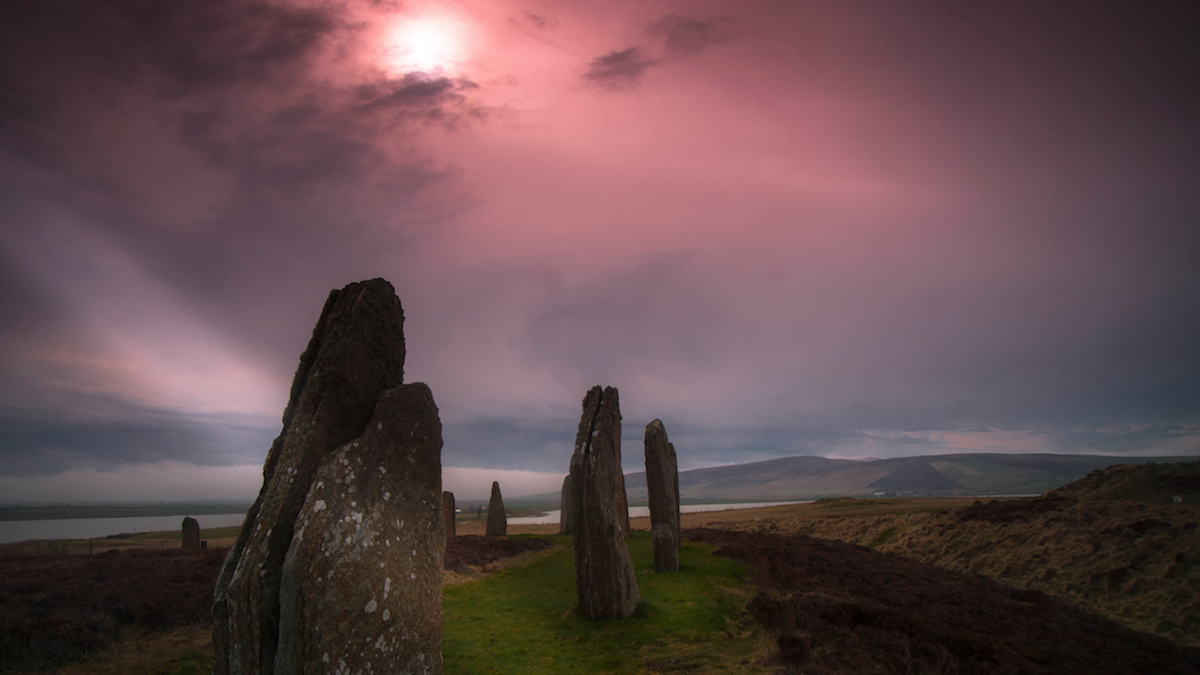
Orkney’s uranium reprieve
Posted: 19th April 2021
Posted on April 18, 2021 by beyondnuclearinternational

Maxwell Davies’ music memorializes an important victory
By Linda Pentz Gunter
On a midsummer day on Saturday, June 21, 1980, in a Victorian Hotel on the Orkney Islands, resident composer Peter Maxwell Davies and actress Eleanor Bron performed the composer’s newest piece — The Yellow Cake Revue. It was part of the Islands’ annual St. Magnus Festival, founded by Maxwell Davies, poet George Mackay Brown and Archie Bevan.
“Yellow cake” or uranium ore, seemed like an unlikely subject matter for a cabaret. But Maxwell Davies was an unlikely kind of musician — deeply connected to causes including gay rights, anti-war and the environment.
I first learned of the music of Maxwell Davies through Donald Ranvaud, another renaissance polymath, who was teaching at the University of Warwick when I was a student there and inspired in me a passion for Italian cinema, especially Bertolucci and Pasolini.

Composer Peter Maxwell Davies celebrated Orkney’s defeat of uranium mining with his piece, “The Yellow Cake Revue.” (Photo: Wikimedia Commons)
Don, who went on to become an internationally celebrated film producer, was also determined to introduce me to the music of “Max,” as he called the composer, and who he obviously knew personally, one of many leading lights in the arts who would become friends of Don’s — Bertolucci was another. (Ranvaud and Maxwell Davies died in 2016 and Bertolucci two years later.)
So off I went to London to hear the latest Maxwell Davies work, performed by the chamber ensemble, The Fires of London, co-founded by Maxwell Davies and fellow avant garde composer, Harrison Birtwistle.
That concert — bold, wild, different — was in 1975. But unbeknownst to me at the time, Maxwell Davies and his fellow residents of the Orkney Islands, — an archipelago located just off the northeastern coast of Scotland and where the Salford-born Maxwell Davies had chosen to settle — were already confronting an ominous new threat that would consume the islands for several years.
The Orkneys were being surveyed for a potentially valuable deposit of uranium ore. The South Scottish Electricity Board had already persuaded local farmers, unaware of the health risks, to allow bore hole drilling on their land.
The uranium “corridor” as it was known, stretched from the town of Stromness to the cliffs of Yesnaby, both of which would feature as piano interludes in Maxwell Davies’ haunting new piece — as the now well-known refrain, Farewell to Stromness, and as Yesnaby Ground.

Yesnaby was one of the Orkney beauty spots at risk of ruination through uranium exploitation. (Photo: by James Stringer, licensed under CC BY-NC 2.0)
By 1977, the entire local population on Orkney opposed uranium exploitation there. Among those opponents was Max. A Public Examiner was appointed to examine both sides of the case for and against uranium mining in Orkney.
The Public Examiner recommended the plan be abandoned.
As Bevan, who died in 2015, recounts it, the Orkney population universally opposed the uranium plan “not only from the fear of pollution itself, with the gravest consequences for the second principal town of the islands, but also from the point of view of the psychological damage and disastrous social and economic implications of uranium extraction on Orcadian fishing, dairy farming and tourism.”
“The Yellow Cake Revue,” writes Bevan, “symbolizes the active position of vigilance inside Orkney.”
The piece opens with the irony-filled Tourist Board Song, imagining the island post-uranium mining andwhich juxtaposes a “jolly waltz tempo” with ominous lyrics:
“Oh, the beach we played on
Is fanned by the breath of radon,
And the sand dunes where the lovers hide
Are point two-five per-cent uranium oxide.
“And the little stream of our ablutions
Burns your skin with acidic solutions.
While the rocks that we swam from
Are pulverised by the megaton.”

The Yellow Cake Revue was first performed during the St Magnus Festival. (Photo: St. Magnus church by Kevin George/Shutterstock)
The Uranium Daughters’ Dance sends further chilling warnings of illusory safety promises shattered.
“The tailings are, they said, quite safe,
In tanks held in by dams,
Where clay will prevent seepage of
Their waste across your lands.
“But from the beds of miles of tanks
The seepage wormed its way;
Acids, manganese , lead, copper,
Creeping round the clay.
“We were told we must give up eating
Our produce anymore.
The fields and gardens withered,
Our cows died by the score.
“There blew a mighty hurricane,
Like that of fifty-six,
Which set uranium’s daughter products
At large to do their tricks.”
The Yellow Cake Revue envisages the hell that might have been unleashed had Orkney not won its fight to stop the mining. Orkney’s uranium would have fed the loftily-named Dounreay Nuclear Power Development Establishment, the site of three now closed nuclear reactors in Scotland — two Fast Breeder reactors and one thermal research reactor.
The Dounreay site was troubled with leaks, spills and accidents, including a sodium explosion on May 1977, and stopped generating electricity in 1994. The site has left a deadly legacy of radioactive detritus that has contaminated the sea and beaches in the area.

Maxwell Davies and his fellow Orkney residents feared for the fate of farmers and others. (Photo: By Vicky Brock, licensed under CC BY-SA 2.0)
Orkney has since become a renewable energy mecca, generating more wind energy from community-owned turbines than it can use. Wave and tidal power is waiting in the wings. Islanders zip around in electric cars.
But the uranium still lurks beneath Stromness and the uranium wolves could one day return to Orkney’s door. Consequently, Orcadians will never let their guard down. They are ever mindful of Maxwell Davies’ malevolent uranium daughters:
“These ladies leapt from broken tanks
And dams and dykes to freedom,
Whirling madly in the wind,
Trailing their contagion.
Their radioactive fingers fondly
Caressing young and old,
Condemning them to cancers,
And genetic taints untold.”
Headline photo, Ring of Brodgar, Orkney Islands by By Ian Cooper Images/Shutterstock